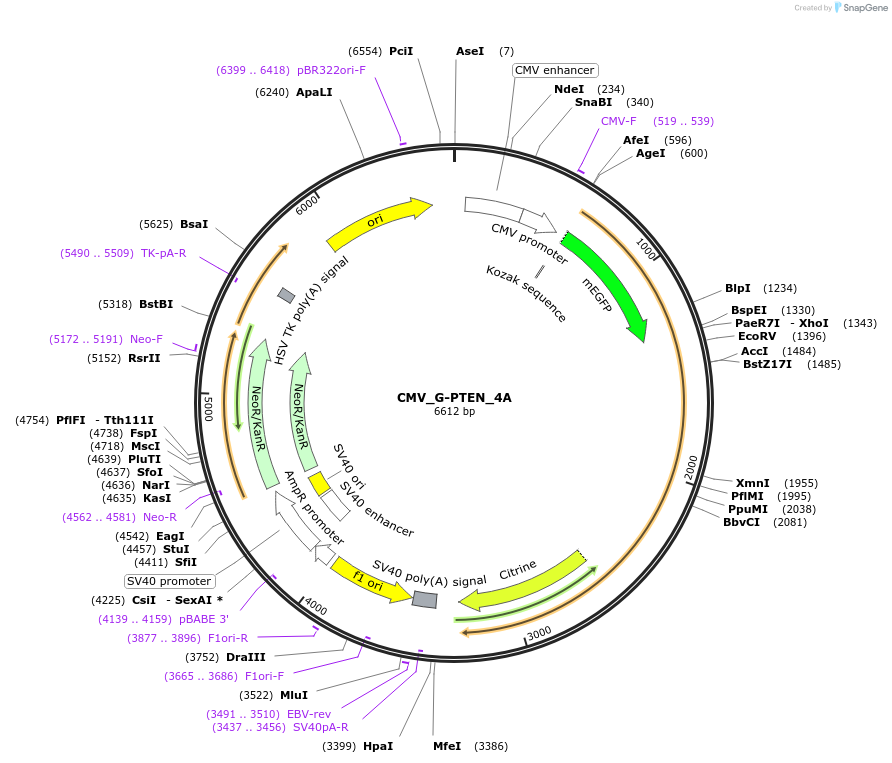CMV_G-PTEN_4A
(Plasmid
#227434)
-
PurposeExpresses the G-PTEN sensor with a 4A mutation
-
Depositing Lab
-
Sequence Information
Ordering
| Item | Catalog # | Description | Quantity | Price (USD) | |
|---|---|---|---|---|---|
| Plasmid | 227434 | Standard format: Plasmid sent in bacteria as agar stab | 1 | $85 | |
Backbone
-
Vector backboneCMV For
-
Vector typeMammalian Expression
Growth in Bacteria
-
Bacterial Resistance(s)Kanamycin, 50 μg/mL
-
Growth Temperature37°C
-
Growth Strain(s)DH5alpha
-
Copy numberHigh Copy
Gene/Insert
-
Gene/Insert nameG-PTEN 4A
-
Alt namemEGFP-PTEN-sREACh with 4A mutation
-
SpeciesR. norvegicus (rat)
-
Mutation4A mutation.
-
GenBank IDpten1
-
Entrez GenePten (a.k.a. MMAC1, Mmac, TEP1)
- Promoter CMV
-
Tags
/ Fusion Proteins
- mEGFP (N terminal on insert)
- sREACh (C terminal on insert)
Cloning Information
- Cloning method Gibson Cloning
- 5′ sequencing primer CMV For (Common Sequencing Primers)
Resource Information
-
A portion of this plasmid was derived from a plasmid made byThe PTEN gene was obtained from Addgene plasmid #110181 pEGFP-PTEN
Terms and Licenses
-
Academic/Nonprofit Terms
-
Industry Terms
- Not Available to Industry
Trademarks:
- Zeocin® is an InvivoGen trademark.
Depositor Comments
Please visit https://doi.org/10.1101/2024.10.04.616644 for bioRxiv preprint.
These plasmids were created by your colleagues. Please acknowledge the Principal Investigator, cite the article in which the plasmids were described, and include Addgene in the Materials and Methods of your future publications.
-
For your Materials & Methods section:
CMV_G-PTEN_4A was a gift from Tal Laviv (Addgene plasmid # 227434 ; http://n2t.net/addgene:227434 ; RRID:Addgene_227434) -
For your References section:
Genetically encoded biosensor for fluorescence lifetime imaging of PTEN dynamics in the intact brain. Kagan T, Gabay M, Meenakshisundaram A, Levi Y, Eid S, Malchenko N, Maman M, Nitzan A, Ravotto L, Zaidel-Bar R, Eickholt BJ, Gal M, Laviv T. Nat Methods. 2025 Apr;22(4):764-777. doi: 10.1038/s41592-025-02610-9. Epub 2025 Feb 20. 10.1038/s41592-025-02610-9 PubMed 39979596

